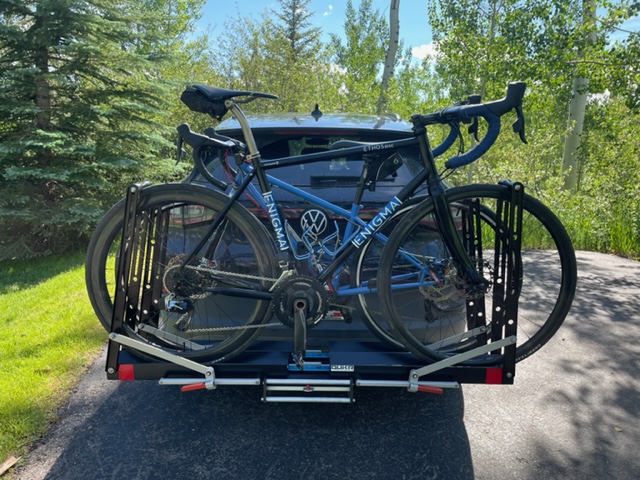Hitch-mounted racks have many distinct advantages over roof mount racks, and in recent years have become very popular. There are ample reasons for this: mountain bikes are heavier these days and hard to lift up high, taking through-axle wheels off is more cumbersome than quick release, and with gas prices at record highs, adding a mainsail and spinnaker to the top of your car cuts into the beer budget. Also, at our house, Mrs. MAMIL is vertically-challenged, so lifting her bike to the roof without significant swearing is not feasible.
Many MAMILs and MAMIL-affiliated people are familiar with the 1-Up bike rack. It’s been around for decades and has a reputation for being solid, bombproof, well-designed, and friggin’ expensive. It’s hard enough smuggling another bike into the house, but adding a rack that costs upwards of a grand is another challenge. Kuat then jumped into the rack market with their own sky-high pricing, which succeeded in normalizing accessories pricing that was higher by a factor of 4 over my first mountain bike.
The 1-Up had a few design flaws, like the Kuats and pretty much everything else on the market until recently. Until just a few years ago, all hitch-mount racks had a release mechanism close to the hitch receiver itself, meaning that on 3 and 4-bike models, you needed arms that were in excess of 60″ long to reach underneath and release the rack if you wanted access to the back of your car. Thule released their T2 model with a D-handle on the back and other designs followed suit, allowing people with shorter arms to raise and lower their bikes.
It should be noted that those designs were still far from perfect, at least in the case of the T2, which did not have a lower position detent, and did not make a loud, positive click when it was raised back to the flat position. I tested this with 2 enduro bikes on the rack, squatting down to lift them back up to level and thinking I heard a click as the rack settled into place. I let go of the handle, and the center of the top tube of the aft bike hit me squarely in the bridge of my nose with an impressive crunching noise (my nose, not the bike). I staggered back and proceeded to bleed all over the driveway. I never knew that my body stored 90% of my blood in my nose, but now I do. Yay, science.
The much-vaunted 1Up’s patent expired recently, leading many other rack manufacturers to jump on the design and make their own versions. Saris, Rocky Mounts, and QuikrStuff, as well as several others, all have released designs that are remarkably similar, with price tags to match. The days of bike racks that cost less than a bike are seemingly over.
Being a product-researchy kind of guy, I spent a fair amount of time comparing the 1Up and QuikrStuff racks, and a short amount of time moving past the Saris and Rocky Mounts because I liked the details of the original and QuikrStuff better. As I dug in even deeper, one item tipped me over the edge in favor of the QuikrStuff: on 1.25″ hitches, they can do up to 3 bikes.
Tool-free installation of the rack and trays was also a major plus, but the 3 bikes on the smaller hitch was the biggest factor. Our cars have 1.25″ hitches factory installed, and although I could change them, swapping the hitch receiver would cost hundreds of dollars in money that could be better spent on beer. Plus, we really don’t tow anything, and our bikes are reasonably light, so changing to the larger format hitch represented a waste of time, money, and effort.
I ordered a pair of individual trays and 2 add-on trays, and settled in to a months-long supply-chain induced slumber. The pandemic and resulting shortages resulted in major difficulties for QuikrStuff to get materials, and apparently extruded aluminum is more scarce than computer chips. With a bit of luck, the delays will shorten and delivery speeds will improve.
So, to sum up the reasons I selected the QuikrStuff over the 1Up:
-
- Tool-free installation into the hitch receiver.
- Tool-free addition of another tray.
- Release lever automatically extends with addition of trays.
- 3 bikes on 1.25″ hitch.
- Tool-free adjustment of wheel bar (the little cross-bar part that presses into the tire).
- 5″ fat tire capacity standard.
- Saving one consonant and one vowel every time I type their name. It’s not a Wahoo-level savings of vowels, but it reduces major wear on my keyboard.
- In-state manufacturer located near some of my favorite riding areas, so I can drive past them while they’re closed, because I go that way on the weekends. (Note: Rocky Mounts is also located in the same town, so I get to drive past 2 factories who are closed while their employees go ride their bikes.)
Once the racks finally arrived, which took an extra day thanks to FedEx shipping them back-and-forth across the state, I giggled with joy and opened a beer. Then I giggled with more joy, because beer.
The racks are packed in reasonably smallish cardboard boxes, with the trays in folded position. While some reviewers make a big deal about the unboxing experience, I could care less. I want it easy to get the stuff out of the box, and I want the box to break down for recycling. QuikrStuff succeeded here, with only 2 pieces of cardboard per box and almost no tape.
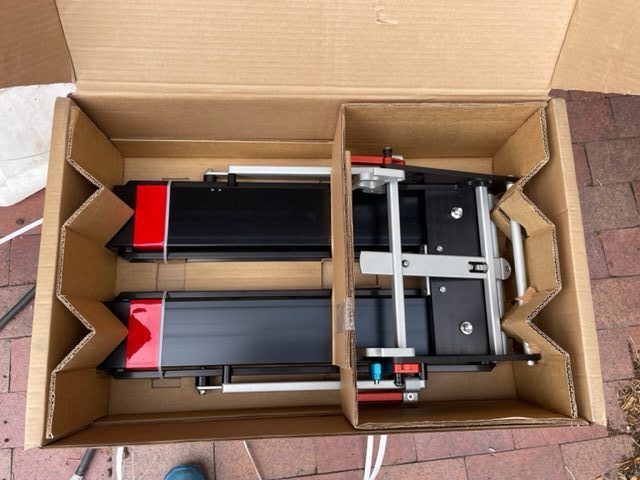
Once out of the box, the base rack unfolds easily. Since this is a 1.25″ version, it also includes a spacer for 2″ receivers.
The spacer is held in place tool-free, with a O-ring for friction. It simply pops on and off.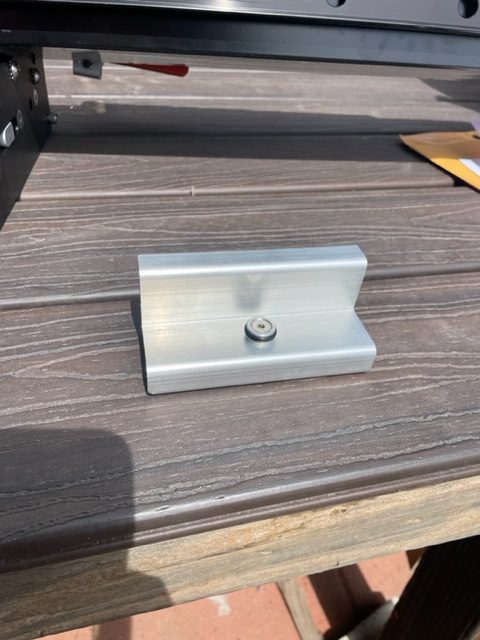
Unfolding the tray is simple, there is a fair amount of tension on the bolts, but that’s a good thing. As they trays swing out into place, a flat spring-loaded bar pops up and locks them. To fold them, you press down on the bar with your thumb. Folding and unfolding the trays is pretty easy, but the bolt tension is tight, so you need to brace the tray on the ground as you go. Hopefully this won’t result in deeps scratches on the ends of the trays over time.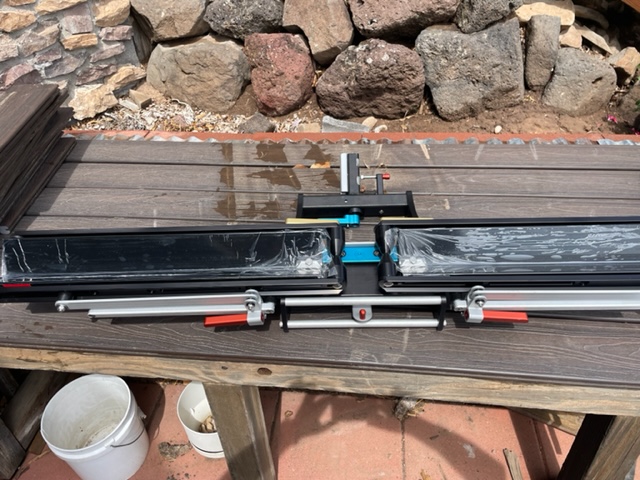
Installation into the receiver is very easy, and since this design uses two small pads that expand off the corner of the hitch tongue, it jambs in very tightly to the receiver. There is basically no side-to-side rock or play. To tighten, spin the handle to snug it up, then press in a locking pin. There are two grooves milled for the lock pin, and these hold the handle into a higher position where it is out of the way of curb scrapes.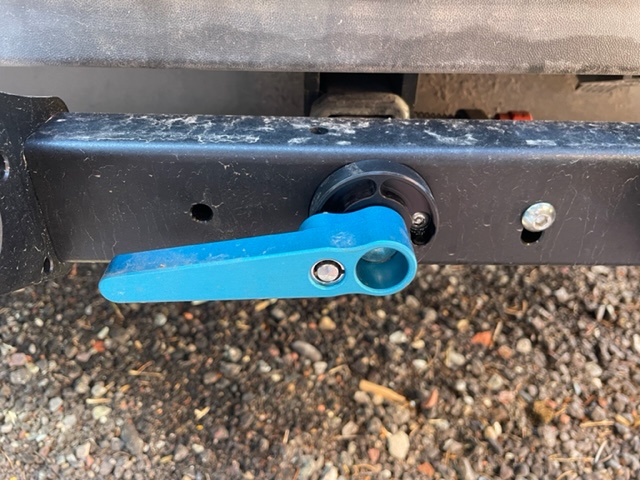
Once the base tray is on, adding a second (or third, or on 2″ versions, a 4th) tray is very easy and fast. The adders have U-shaped hooks which are simply rocked into place against 2 bars. A small spring-loaded latch is then placed over a bolt head, and then a locking pin is pressed. The process takes less than 5 seconds.

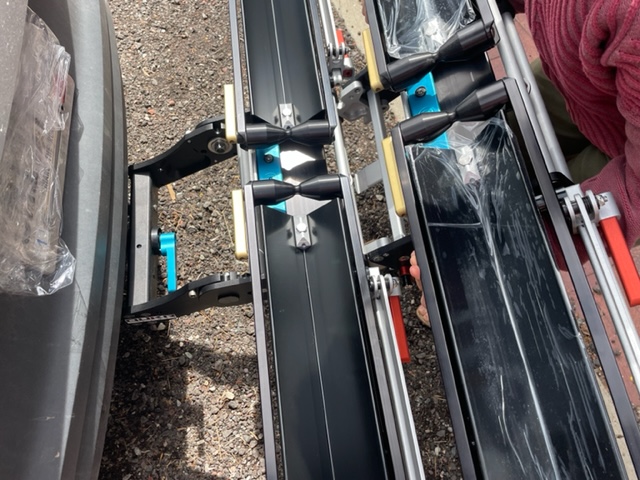
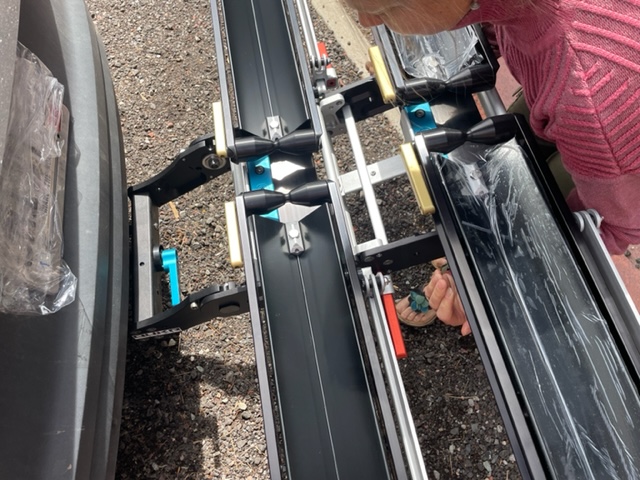
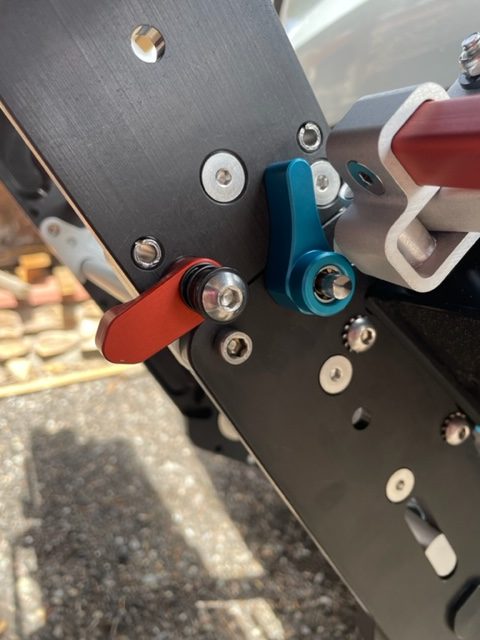
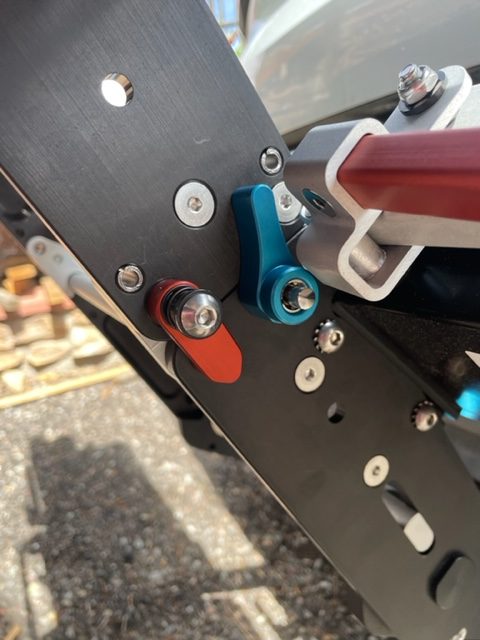
The rack has several positions, all of which make a positive click when you release the lever and latch them into place.
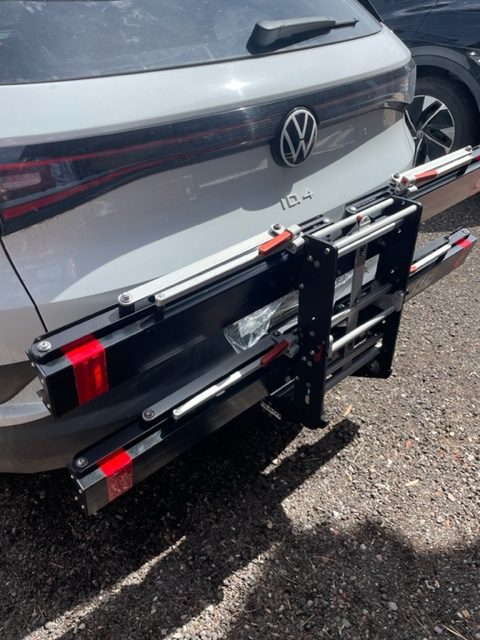
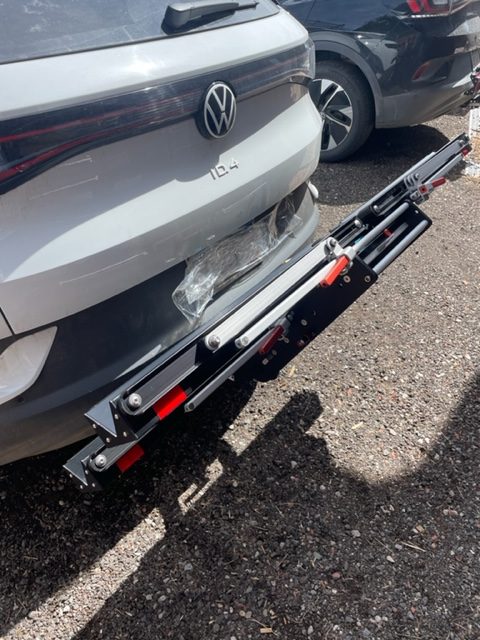
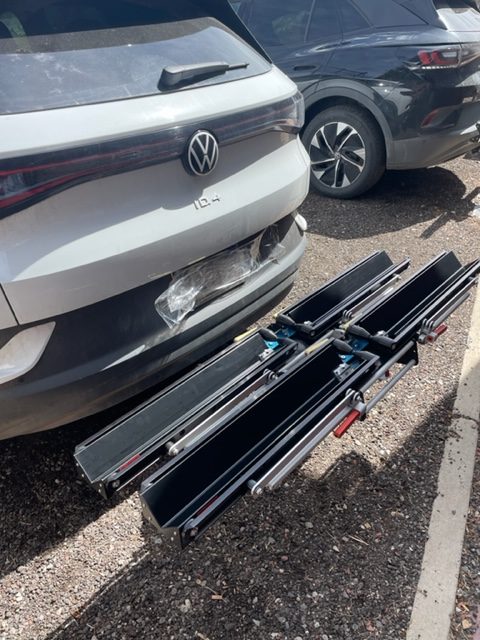
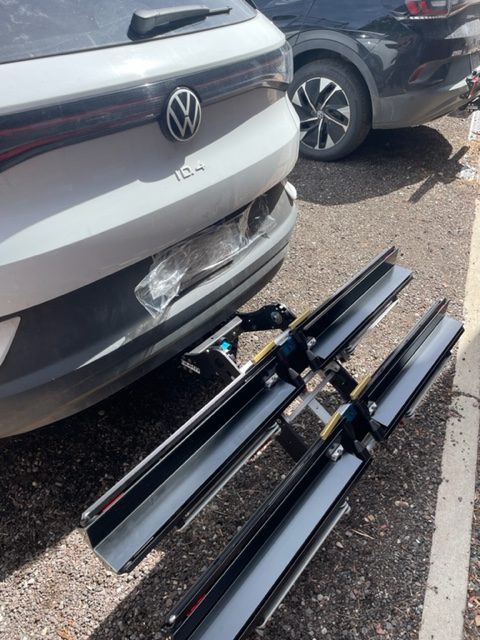
In single-tray mode, my hatch clears the tray and the backup camera is not blocked. My wife and I expect to keep the racks in single mode, with a second tray in the back of the car or basement for when we need them, and on rare occasions, set up with 3 trays. We tend to ride road and gravel more, so heavy mountain bikes stacked up in triple-mode is pretty much not an issue. I think QuikrStuff says 150 pounds total is the maximum for 3 bikes on the 1.25″ version.
The wheel holders then open outwards, sliding on locking bars. To open, you lift the red lever as you slide, then to close, simply slide the wheel holder back down (no need to touch the lever), squishing the tire slightly for a tight fit.
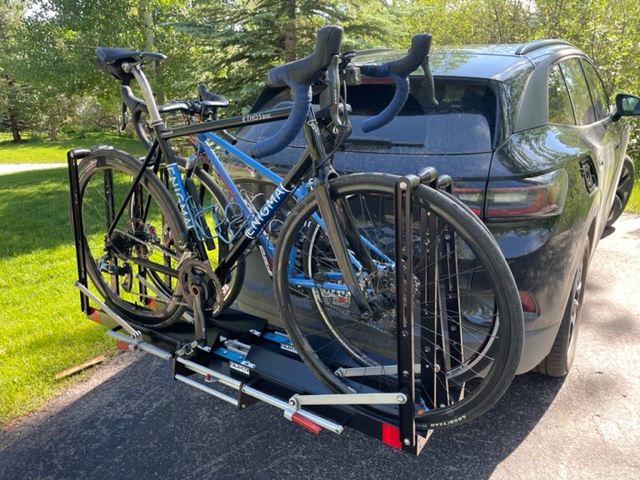
The only slight issue I ran into is that the safety pin on the hitch stem does not align with the pin-hole on the hitch. In talking with QuikrStuff, it turns out the dimension from the end of the receiver hitch to the pin is not a standard, so since I am familiar with the lack of standards thanks to the bicycle industry, I was not surprised. My receiver has a recessed groove, and the safety pin is inside of that, so I am not too worried. Many hitch receivers also have a collar that goes around the end, which will also stop the pin. It would be cool if QuikrStuff offered different length pin-holder arms, but in reality, that’s probably not feasible given the lack of standard dimensions.

The rack is very solid and has only a tiny side-to-side rock when loaded, about 1/4″ up and down. This is due to the long lever arm of the tray assemblies, if you grab the whole thing at the center and try to rock it, it is completely solid in the receiver. The back of the rack is also well-designed (similar to 1Up) with a steep upslope that will clear all but the worst curbs and gutters. Yakima and Thule racks I’ve owned have all dragged badly.
QuikrStuff also sends 3 keys with each rack, and were able to make sure the racks for both my car and my wife’s were keyed alike. Their customer service is very good, and I had a few conversations with them as we got closer to an actual ship date. I like being able to support a local company, and I think the design of the rack is very good. The large plates of aluminum are nicely milled and anodized, and the fit-and-finish is high quality. No burrs or sharp edges, and the tray assemblies are reasonably light and not cumbersome. I also like the inclusion of red reflective tape, something I have added to all my previous racks.
As with all product families, once you enter a product ecosystem, you’re committed. I really can’t compare all of the details with this rack to the 1Up, since I don’t have one, but I’ve used some with friends who own them. I had considered buying into that world, but to me, the details on the QuikrStuff were just better: I didn’t want to buy a separate kit for fatbikes, I wanted as much tool-free as possible, and I didn’t like the ratchet bar on the older style 1Ups (although this has changed). The price difference between the two systems was about $100, but once I factored in the fatbike adder, the QuikrStuff was a better choice.
The rack is expensive, there’s no question. But in this case, it’s a get-what-you-pay-for deal, the quality is very high and the rack works well. Mrs. MAMIL said it’s the easiest rack she’s ever used, and making her happy is worth every penny. Some have commented that it’s nearly identical to the 1-Up, but given that the safety bicycle design hasn’t fundamentally changed for over a century, despite annual claims of better bikes, I don’t see that as a major issue.
Another item of note: as I edited this post (yes, I sort of re-read my stuff before publishing. Kind of.), I realized that I had typed the word “simply” many, many times in my descriptions of the rack and using it. Maybe that’s actually the most important aspect of this product: it’s simple. There’s no fuss, no stupid adjustments, no poorly thought-out aspects. It just works, and it’s simple. In today’s marketplace, that’s rare to find.
